Introduction to Non-Surgical Eye Rejuvenation
As aging and environmental factors affect the delicate skin around the eyes, many seek effective ways to restore a youthful appearance without undergoing surgery. Non-surgical eye rejuvenation offers a range of innovative treatments aimed at reducing dark circles, puffiness, fine lines, and eyelid laxity with minimal risk and downtime. This article explores the most promising non-invasive and minimally invasive options, their benefits, and how they compare to traditional surgery.
Understanding Non-Surgical Eye Rejuvenation Options and Benefits
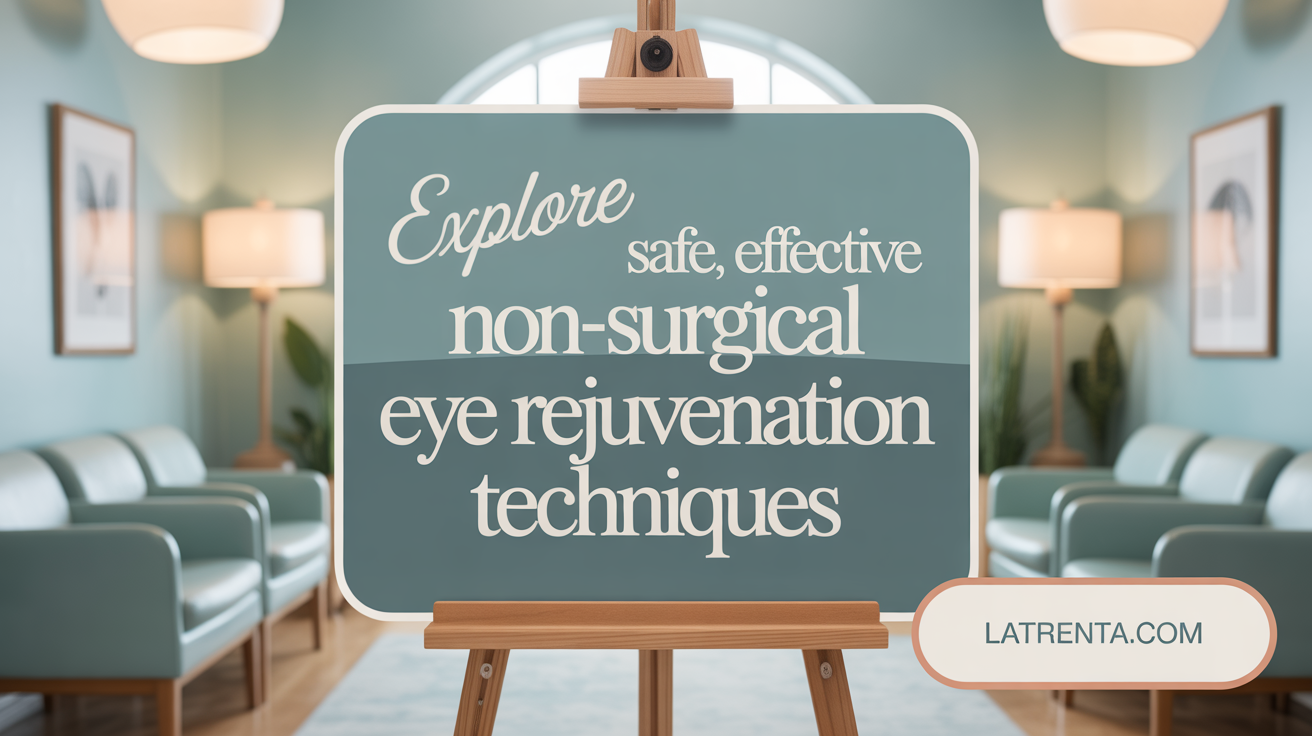
Can the appearance of the eye area be improved without surgery, and what treatments are commonly used?
Yes, it is entirely possible to enhance the eye area's look without resorting to surgical procedures. Non-invasive treatments have become increasingly popular, offering subtle yet effective results with minimal risks.
Common treatments include botulinum toxin injections such as Botox, Dysport, or Xeomin. These relax the muscles around the eyes, reducing crow's feet and fine lines while lifting droopy eyelids in some cases.
Dermal fillers, primarily hyaluronic acid-based products like Restylane or Juvederm, restore lost volume in the hollows under the eyes, diminishing dark circles and shadows. Such fillers can provide immediate results and are customizable according to individual needs.
Laser resurfacing techniques, including fractional and Erbium or CO₂ lasers, improve skin texture, reduce discoloration, and promote collagen production to tighten loose skin.
Innovative treatments like Micro-Botox involve tiny superficial injections that relax muscles and smooth fine lines without affecting facial expressions.
New technologies such as Emface Eye use synchronized radiofrequency and HIFES™ (High-Intensity Facial Electrical Stimulation) to stimulate collagen, elastin, and underlying muscles. This procedure offers a non-surgical lift, reducing puffiness and crow’s feet.
In addition to aesthetic procedures, some eye health measures like sun protection, adequate sleep, and reducing screen time contribute to maintaining and improving eye area appearance.
Overall, these treatments provide effective options for those seeking natural-looking enhancements without the risks associated with surgical options like blepharoplasty.
| Treatment Type | Main Benefits | Suitable For |
|---|---|---|
| Botox, Dysport, Xeomin | Smooths wrinkles, lifts eyelids, relaxes muscles | Fine lines, crow's feet, mild drooping |
| Dermal Fillers | Restores volume, reduces dark circles | Hollows under eyes, volume loss |
| Laser Resurfacing | Skin tightening, discoloration reduction | Fine lines, sun damage, uneven skin tone |
| Micro-Botox | Fine lines smoothing, muscle relaxation | Early signs of aging, fine wrinkles |
| Emface Eye | Collagen regeneration, muscle toning | Puffiness, crow’s feet, skin laxity |
Candidates interested in subtle rejuvenation often choose these non-surgical options for their safety, convenience, and natural results. Most treatments require little to no downtime, making them practical for busy lifestyles while providing effective improvements in the appearance of the eye area.
Innovative Technologies for Non-Invasive Eye Lifting and Skin Tightening
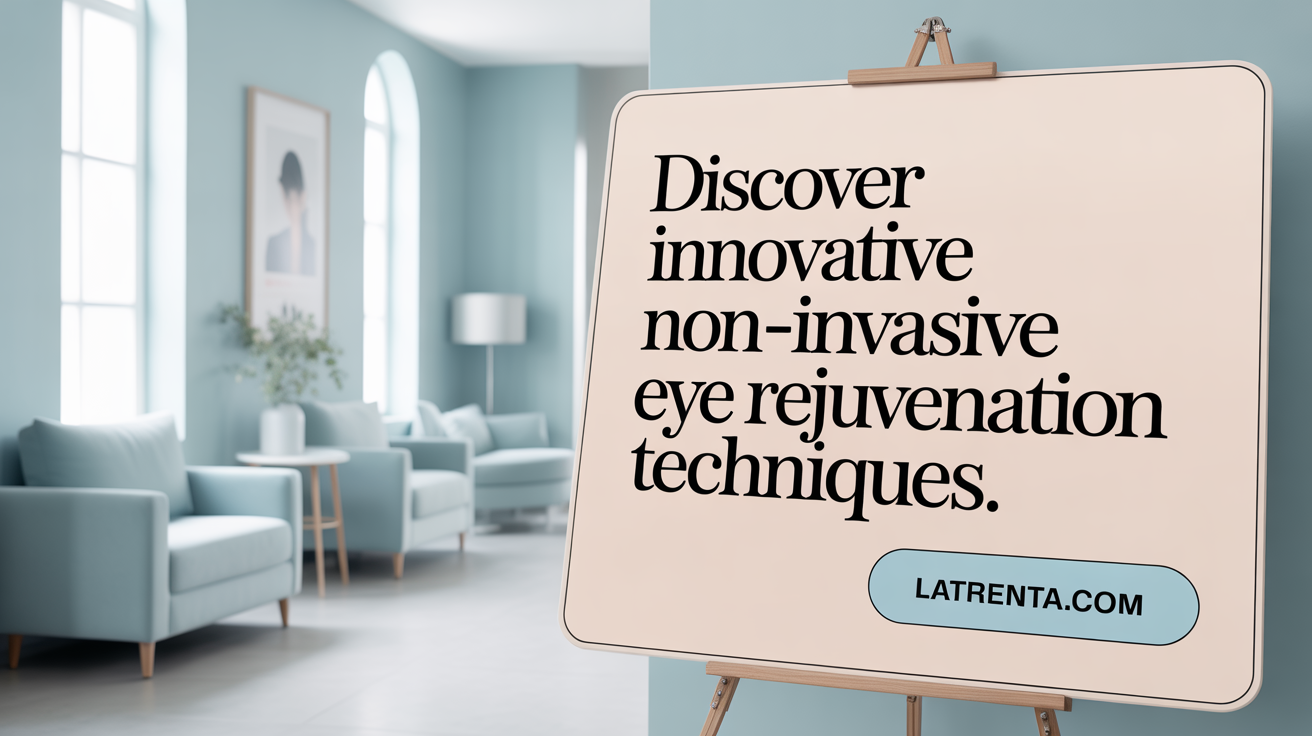
What is a non-surgical eye lift procedure, and how does it improve the area around the eyes?
A non-surgical eye lift, such as the plasma-based Plexr or PlexR Plus device, uses a small electrical arc to generate plasma energy. This energy creates tiny controlled superficial wounds on the skin surface, which stimulate the body's natural healing process. As new collagen and elastin fibers form, the skin becomes tighter and more lifted.
This treatment effectively targets common aging signs such as drooping eyelids, sagging skin, fine lines, crow’s feet, under-eye bags, and puffiness. The effects are gradual, with collagen production enhancing skin firmness over several weeks. Each session usually lasts about 1 to 2 hours, with minimal discomfort and no need for general anesthesia. Because it is non-invasive, recovery time is minimal, and most patients enjoy immediate returns to daily activities.
Compared to traditional eyelid surgery, non-surgical options like plasma treatments offer a safe, effective way to rejuvenate the eye area with fewer risks and less downtime. The results improve over time, providing a more youthful, refreshed appearance without the need for surgical intervention.
Plasma Non-Surgical Eyelift (PlexR) and Its Mechanism
The PlexR or PlexR Plus treatment uses plasma energy to vaporize tiny skin cells, causing the skin to contract and tighten. The procedure involves numbing the area, applying plasma energy via a small handheld device, and then healing within about a week. Collagen stimulation continues for up to 8-12 weeks, leading to sustained skin tightening.
Laser Blepharoplasty: How Laser Technology Aids Eyelid Lifting
Laser blepharoplasty employs focused laser beams, such as those from Fotona Dynamis or other advanced platforms, to precisely remove excess skin and fat in the eyelids. The laser's heat promotes collagen remodeling and tissue contraction. With minimal invasiveness, it results in faster healing, reduced scarring, and fewer complications than traditional surgery. Patients notice immediate tightening effects and can often resume normal activities within a few days.
Radiofrequency (RF) Treatments Including Emface Eye Therapy
RF treatments like Thermage, Venus, and Emface Eye therapy heat the deep layers of the skin, prompting collagen and elastin formation. Emface Eye combines RF with HIFES™ technology to strengthen muscles around the eyes and improve skin elasticity. Its non-invasive nature allows comfortable sessions of about 20 minutes, with improvements visible over several weeks.
Microneedling Combined with RF (e.g., Morpheus8)
Devices such as Morpheus8 combine microneedling with RF energy to stimulate collagen production inside the skin’s layers. This approach targets mild to moderate skin laxity, fine lines, and uneven skin tone. The treatment induces controlled micro-injuries, boosting skin firmness and elasticity, suitable for under the eyes and surrounding areas.
How These Therapies Promote Collagen and Elastin for Skin Firmness and Rejuvenation
All these advanced treatments—plasma, laser, RF, and microneedling—share the common goal of stimulating natural collagen and elastin fiber production. Collagen enhances skin strength and volume, while elastin improves skin flexibility. As these proteins regenerate, the skin becomes tighter, more resilient, and better at resisting aging effects.
Comparison of Procedural Process and Recovery Time
| Treatment Type | Duration | Anesthesia | Downtime | Expected Results |
|---|---|---|---|---|
| Plasma (PlexR) | 1-2 hours | None required | Minimal, scabbing possible | Gradual, collagen-driven tightness |
| Laser Blepharoplasty | 30-60 min | Local anesthesia | 2-5 days | Immediate lifting, ongoing improvement |
| RF (Emface, Thermage) | 20-40 min | No | None | Several weeks to months |
| Morpheus8 (RF microneedling) | 30-60 min | Topical numbing | 1-3 days | Visible over 2-3 months |
Advantages of These Advances Over Traditional Surgery
Non-invasive procedures offer many benefits. They carry lower risks, involve no incisions, and have little to no recovery time. Patients can often return to their routines immediately after treatment. The subtle, natural improvements appeal to those hesitant about surgery and seeking an alternative that still provides effective rejuvenation. Regular maintenance treatments can prolong the youthful appearance, making these options increasingly popular in anti-aging care.
Minimally Invasive Volume Restoration: Dermal Fillers and PRF for Under-Eye Rejuvenation
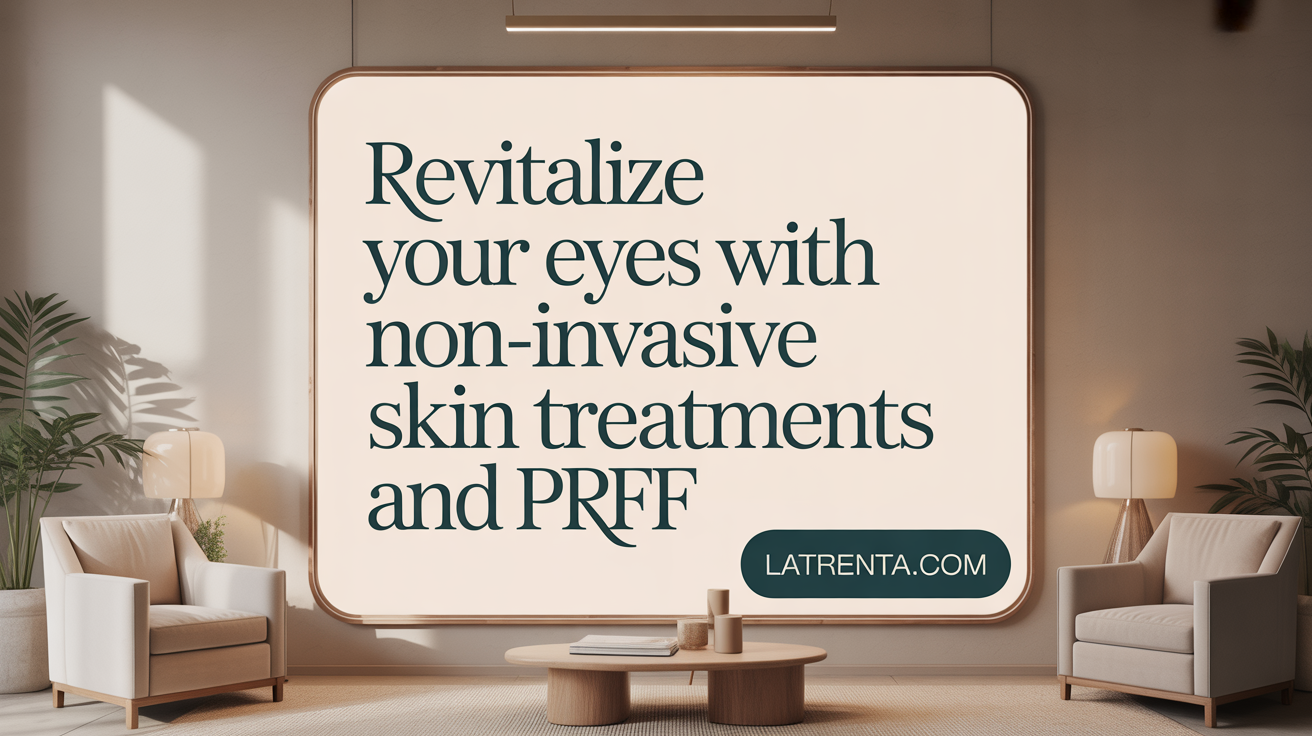
What is non-surgical blepharoplasty for under-eye rejuvenation, and how does it work?
Non-surgical blepharoplasty offers a minimally invasive solution to enhance the look of the under-eye area. It does this primarily through the use of dermal fillers, especially hyaluronic acid-based ones like Restylane® and Belotero Balance. These fillers are injected into the tear trough hollows to restore volume, diminish dark shadows, and create a more youthful appearance.
The procedure is quick, typically lasting about 15 minutes, and provides immediate visible improvements. Because it requires minimal injection—using tiny needles—there is usually little discomfort. Patients can resume their daily activities right after, with potential minor swelling or bruising resolving in a few days.
In some cases, Platelet-Rich Plasma (PRP), also known as PRF (Platelet-Rich Fibrin), is combined with fillers. PRF enhances skin texture, increases collagen production, and minimizes dark circles for longer-lasting results. This combination can improve issues such as fine lines, volume loss, and discoloration.
How fillers restore volume and reduce shadows and dark circles
As people age, the fat pad beneath the eyes diminishes, creating hollows and casts shadows that appear as dark circles. Dermal fillers replenish lost volume, lifting the skin and softening these shadows.
Hyaluronic acid fillers are particularly effective because they are biocompatible, reversible, and customizable. They instantly plump the under-eye area, making the eye look brighter and more rested.
The filling process smooths fine lines and creases, reducing the tired or aged appearance associated with shadows and dark circles. The immediate effect enhances facial balance and gives a more youthful, refreshed look.
Combination therapies including PRF to improve skin texture and pigmentation
To optimise results, clinics often combine fillers with PRF treatments. PRF uses the patient’s own blood to create a natural concentrate rich in growth factors, which stimulates collagen and elastin production.
This combination not only restores volume but also improves skin quality, reducing pigmentation and fine lines. PRF can significantly enhance the longevity of the rejuvenation outcome, keeping the skin brighter, tighter, and more resilient.
Procedure details and minimal downtime
Both filler injections and PRF treatments are minimally invasive, requiring no general anesthesia. With fillers, a very fine needle is used to deposit the gel into targeted areas. PRF involves a quick blood draw followed by centrifugation to prepare the concentrate, which is then injected into the skin.
Patients experience little to no discomfort, and the downtime is minimal. Normal activities can usually be resumed immediately, with some minor swelling or bruising expected but typically resolving within a few days.
Longevity of filler results and maintenance
Hyaluronic acid fillers generally last between 6 to 12 months around the eyes, depending on the specific product used and individual metabolism. PRF benefits may extend over 6-12 months, with improvements continuing as collagen production is stimulated.
To maintain results, periodic touch-up treatments are recommended. Consistent skincare, sun protection, and regular follow-ups help prolong the rejuvenated appearance.
Suitability and differences between filler and PlexR treatments for distinct concerns
Filler injections are ideal for addressing volume loss, hollows, and shadows caused by aging or congenital features. They provide immediate, natural-looking volume enhancement.
In contrast, PlexR uses plasma technology to tighten and lift the loose skin without injections or surgery—suitable for mild to moderate skin sagging but does not add volume.
Choosing between these options depends on the specific issues: fillers for hollows and shadows, PlexR for skin laxity and sagging.
In some cases, combining both treatments delivers comprehensive rejuvenation, tackling both volume deficits and skin laxity for optimal results.
Comparing Surgical and Non-Surgical Eye Rejuvenation: Making the Right Choice
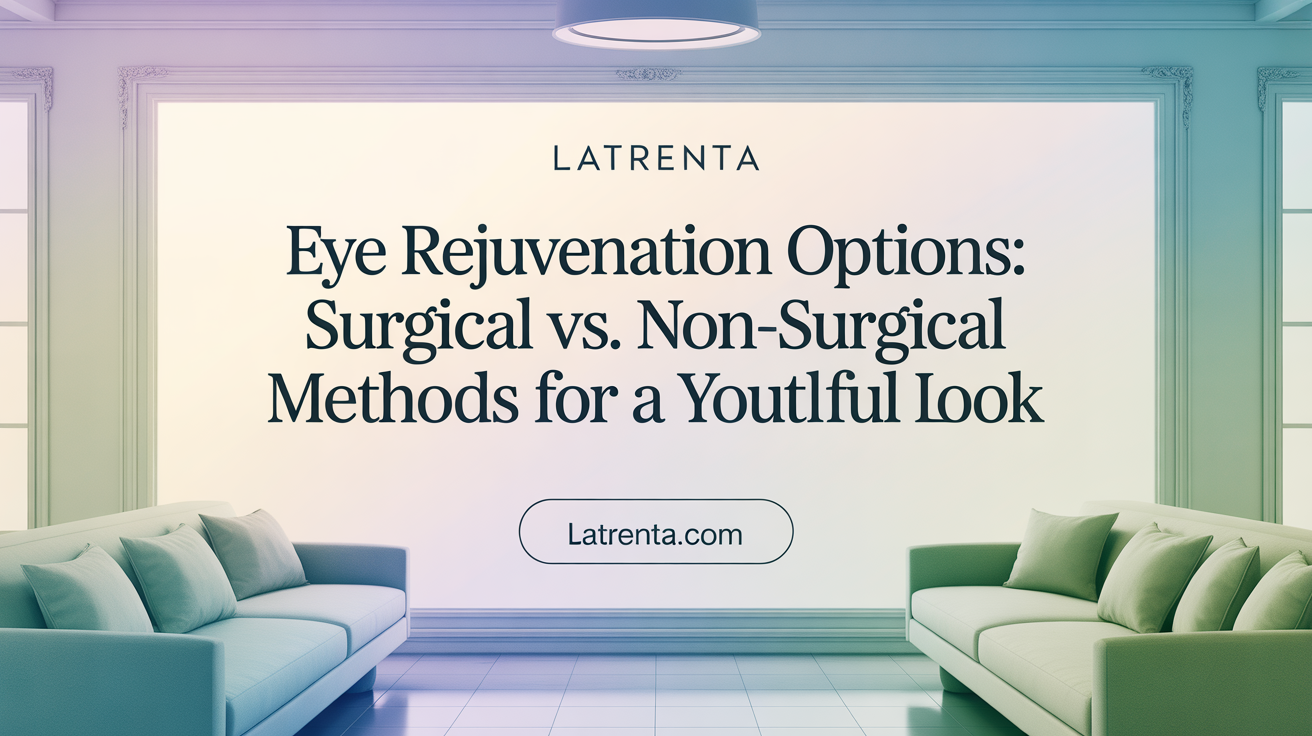
What are the most effective non-surgical options for eye rejuvenation, and how do they address issues like dark circles?
Non-surgical treatments for the eye area have advanced considerably, offering subtle yet effective improvements without the need for surgery. Dermal fillers, especially those based on hyaluronic acid like Restylane or Juvederm, are among the most popular options. These fillers restore volume in the under-eye hollows, which are often the cause of dark shadows, giving a brighter, more rested look.
Laser resurfacing treatments, such as fractional or Erbium lasers, help improve skin texture and tone by removing damaged skin cells and stimulating collagen growth. This process can reduce pigmentation and fine lines, making dark circles less noticeable.
Additionally, technologies like AGNES RF microneedling combine microneedling with radiofrequency energy to tighten the skin and lift the eyelids. This treatment also reduces puffiness and improves skin elasticity, providing a more youthful appearance.
Chemical peels are another option for rejuvenation, helping to diminish dark pigmentation and fine lines around the eyes by exfoliating the skin’s surface.
While these non-invasive procedures can significantly improve dark circles and the overall eye area, they often work best for mild to moderate concerns. For more persistent or severe issues, minimally invasive surgical options like lower eyelid blepharoplasty are more effective, as they directly remove excess fat and tighten skin.
Key Differences Between Surgical Blepharoplasty and Non-Invasive Options
| Aspect | Surgical Blepharoplasty | Non-Surgical Procedures | Details |
|---|---|---|---|
| Invasiveness | Requires incisions, sometimes with stitches | No incisions; typically injections or laser | Surgical methods involve cuts, while non-invasive use energy or injectable substances |
| Risks | Higher risks including scarring, anesthesia risks, longer recovery | Minimal risk, side effects include swelling or bruising | Safety depends on provider experience; non-invasive treatments are generally safer |
| Downtime | Several days to weeks, with swelling and bruising | No downtime, minor swelling or redness possible | Non-surgical offers immediate return to daily activities |
| Results | Long-lasting, can be permanent | Gradual, often needs maintenance sessions | Surgical results are typically more pronounced and enduring |
| Suitability | Moderate to severe aging signs, excess skin and fat | Mild to moderate aging signs, volume loss, fine lines | Depends on individual concerns and desired outcomes |
| Cost | Higher due to surgery and anesthesia | Generally less expensive | Cost varies based on treatment type and provider |
| Long-Term Maintenance | Usually permanent with proper care | Regular touch-ups or repeat sessions | Both options require ongoing skin care and sun protection |
Deciding Between Approaches
Choosing the right treatment depends on individual aging signs, health, and personal preferences. Surgical options like blepharoplasty provide a more definitive correction of eyelid droopiness and puffiness, often for cases of significant excess skin or fat.
Non-surgical treatments are suitable for those seeking subtle improvements or who wish to avoid surgery. They require regular maintenance but pose fewer risks and have quick recovery times.
In some cases, combining treatments enhances results, such as using fillers with laser treatments or micro-Botox, to address multiple concerns effectively.
Prioritizing Safety and Expertise
Regardless of the chosen approach, it is crucial to seek care from experienced, qualified professionals. Proper assessment ensures individualized treatment plans, maximizing safety and achieving natural, satisfying results.
What to Expect: Procedure, Safety, and Aftercare in Non-Surgical Eye Treatments
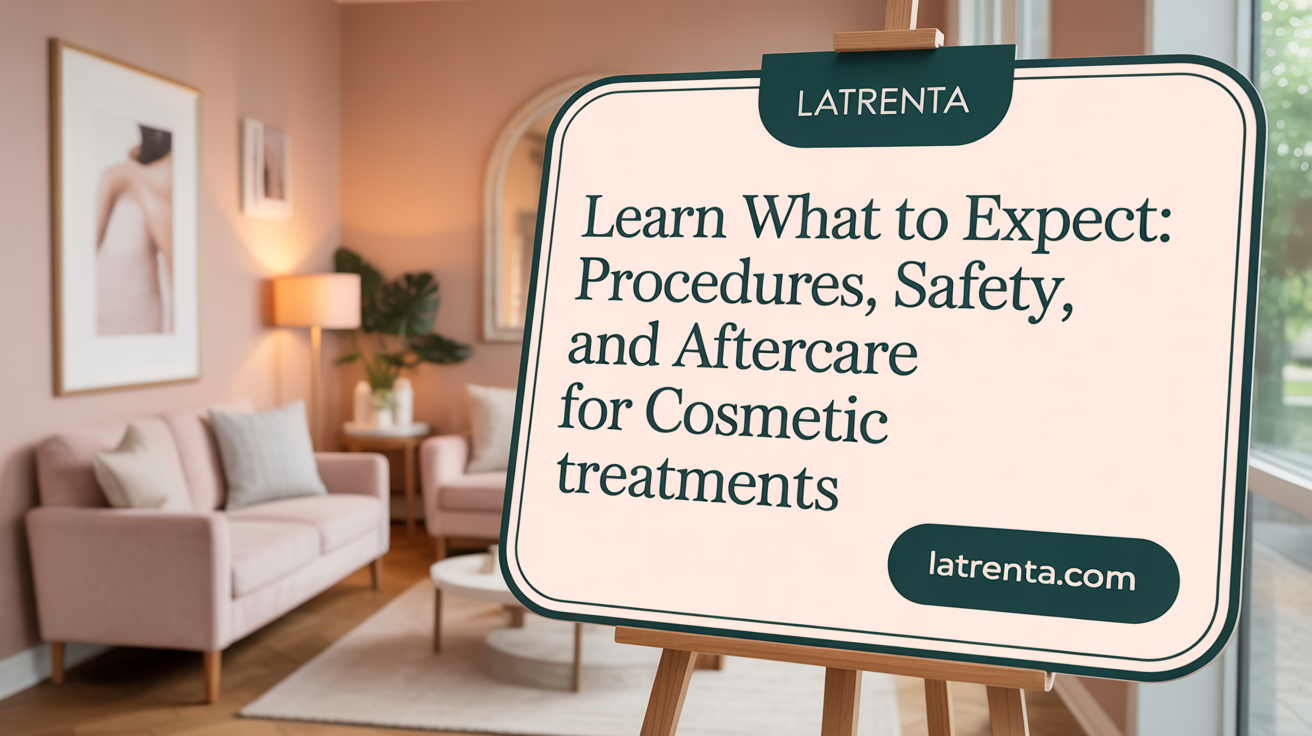
Is it possible to change the appearance of the eye area without surgery, and what treatments are commonly used?
Yes, there are effective non-invasive options to enhance the eye area without the need for surgery. Treatments such as Botox or Dysport are used to relax muscles around the eyes, reducing crow's feet and lifting droopy eyelids temporarily. Dermal fillers, especially those based on hyaluronic acid like Restylane or Juvederm, restore volume in hollows under the eyes, decreasing dark circles and puffiness. Additionally, newer devices like EMFACE Eye utilize combined radiofrequency and high-intensity electrical stimulation to tone muscles and stimulate collagen production, helping to improve puffiness and fine lines. Laser technologies such as fractional CO2 and Erbium lasers help smooth skin, reduce pigmentation, and tighten the eyelid skin. Plasma-based treatments like PlexR use a small electrical arc to stimulate collagen growth, effectively tightening loose skin. Non-surgical eyelid lifts can also be achieved through procedures like laser blepharoplasty, which employs precise laser energy for tissue removal with minimal downtime. Preventive and supportive strategies include UV protection, adequate sleep, and lifestyle modifications to sustain the results.
Step-by-step procedural overview for common treatments
Most non-surgical treatments begin with consultation and assessment.
- For laser resurfacing, a topical anesthetic is applied, followed by the laser procedure which targets skin imperfections.
- Radiofrequency treatments involve heating the deep dermis with devices like Thermage, with the applicator gently draping over the area.
- Under-eye dermal fillers are injected with fine needles into the tear trough, providing immediate volume and contour correction.
- Micro-Botox involves small superficial injections to relax muscles and reduce fine lines.
- EMFACE Eye utilizes synchronized RF and HIFES technology, usually performed with no anesthetic.
- PlexR involves numbing cream, then applying plasma energy through a pen-like device, causing controlled sublimation of excess skin.
Duration and number of sessions required
Most treatments are quick, typically taking 15-30 minutes per session.
- Laser treatments may require 1-3 sessions depending on skin condition.
- Fillers usually provide immediate results; however, optimal effects are seen after a few days.
- EMFACE Eye treatments are scheduled in a series of 4 sessions spaced one week apart.
- Plasma eyelid tightening may need only one session.
Recovery timelines and typical side effects
Recovery varies by procedure.
- Laser resurfacing may cause redness and peeling lasting up to a week.
- Fillers may lead to swelling or bruising for a few days.
- Micro-Botox causes minimal discomfort with virtually no downtime.
- EMFACE and PlexR treatments have no significant downtime, with results appearing gradually. Common side effects are usually mild and temporary, including redness, swelling, or slight bruising.
Safety standards and FDA approval
All treatments mentioned are performed by trained professionals and are FDA-approved or supported by strong clinical evidence.
- Devices like Thermage, Fraxel, and Ultherapy meet safety standards.
- Fillers are tested for safety and come with professional guidelines for administration.
- Plasma and laser treatments require precise application to avoid adverse effects.
Risk management and patient candidacy criteria
Candidates should be in good health, with realistic expectations.
- Ideal candidates have mild to moderate aging signs, such as early wrinkles or hollows.
- Smokers or those with active skin infections should delay treatment.
- A thorough consultation determines suitability and risk assessment.
Post-treatment care including sun protection, lifestyle adjustments, and follow-up
Post-care includes avoiding sun exposure, applying recommended skincare, and keeping the area clean.
- Regular follow-up visits help monitor results and address any concerns.
- Using sunscreens and avoiding tanning protect against pigment changes.
- Lifestyle factors like balanced diet and hydration support skin health.
New technologies enhancing safety and outcomes
Recent advancements include combined modalities like EMFACE, which offers painless treatment with demonstrated collagen boost.
- Plasma technologies such as PlexR are continuously refined for safety.
- Integration of AI and real-time imaging improves precision.
- Non-ablative lasers provide effective results with minimal risk and downtime. Overall, personalized treatment planning and technological improvements ensure safer, more natural-looking eye rejuvenation.
Making Informed Choices for Eye Area Rejuvenation
Non-surgical eye rejuvenation presents a compelling alternative to traditional surgery, offering effective results with minimal downtime, reduced risk, and natural-looking improvements. Whether through advanced laser technologies, radiofrequency treatments, or dermal fillers, there are tailored solutions for various aging concerns around the eyes. Understanding the options, candidacy criteria, procedural details, and expected outcomes empowers individuals to select the approach best suited to their needs. Consulting with experienced, qualified specialists is essential to craft personalized treatment plans that deliver safe and satisfying results, helping you refresh and revitalize your eye area without the scalpel.
References
- Eye Rejuvenation 101: Safe Alternatives to Blepharoplasty
- Emface Eye Therapy: The Future of Non-Invasive Eye Rejuvenation
- Eyelid lift without a scalpel - what is it? Treatment, effects - Wellclinic
- Discover the Magic of Non-Surgical Facelifts: Rejuvenate Without ...
- Laser Blepharoplasty for Eye Rejuvenation: Benefits & Safety
- New EMFACE Eye: Treat Eye Bags, Dark Circles, and Crow's Feet
- Beyond Surgery: Non-Surgical Eye Rejuvenation Alternatives
- Under-Eye Rejuvenation Options - The Centre For Cosmetic Surgery
- Rejuvenating the eye area - find out about effective methods and ...
- Experience a Complete Eye Rejuvenation with Our Quadfecta™ Lift ...
